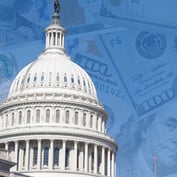What You Need to Know
- The estate tax exemption is scheduled to be cut in half at the end of 2025.
- One effective strategy is to create two irrevocable trusts.
- As multiple planning steps are required, wealthy families should act as soon as possible.
If business owners and other high-net-worth individuals do not act this year, they could miss out on significant planning opportunities that could otherwise assist in the tax-free transfer of millions of dollars within their family’s estate. Multiple planning steps are required to maximize the current estate tax exemption, which is scheduled to be cut in half at the end of 2025.
The estate tax exemption for 2024 is $13.61 million per person or $27.22 million for couples. The exemption — officially the basic exclusion amount — is indexed to inflation, so it will rise again next year before it gets cut in half at the start of 2026. The result is a loss of roughly $7 million of exemption for each person.
The upcoming change is part of the 2017 tax overhaul, which both doubled the existing exemption and scheduled it to sunset without additional action by Congress. In practical terms, couples could leave far more than $14 million on the table if they don’t act ahead of the sunset, using strategies to ensure that the growth of that money after 2025 is also estate-tax free.
Tax-Saving Estate Strategies
One of the best strategies is to create two irrevocable trusts, such as a dynasty trust or a spousal lifetime access trust, and make gifts to the trusts to lock in the current estate tax exemption.
Couples could consider structuring the first trust as a spousal lifetime access trust with the spouse as the beneficiary and the second as a dynasty trust with the children as the beneficiaries. However, couples often prefer to have multiple spousal lifetime access trusts so that one spouse is not left out as a non-trust beneficiary.
In creating multiple spousal lifetime access trusts with spouses as beneficiaries, they must not be so interrelated as to trigger the reciprocal trust doctrine, which the U.S. Supreme Court first examined in United States v. Estate of Grace in 1969. This doctrine prevents spouses from creating, for example, two trusts on the same date with the same terms, except with alternating spouses as creator and beneficiary.
There are a variety of factors that the Internal Revenue Service and courts consider in determining whether trusts run afoul of the reciprocal trust doctrine and thus lose their tax advantages by causing both trusts to be included in the estates of each spouse.









 April 30, 2024 at 05:42 PM
April 30, 2024 at 05:42 PM











